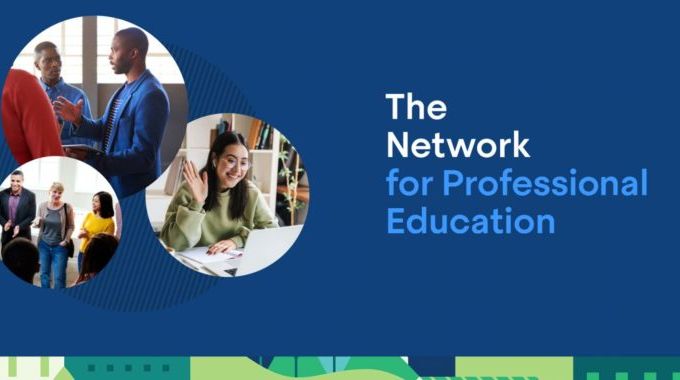EdTech Watch List 2021

As we round out 2020 and look forward to 2021, it would feel silly not to mention that in 2020 we saw an incredible increase in education technology use across the world due to the COVID-19 pandemic. Educational Technologies became central to the delivery of education across the globe. In 2021 the use of educational technology will continue to increase and faculty and students will expect it to continue to improve; the genie is out of the bottle.
Some of the tools below, you have seen before. We continue to monitor and track them to see if they will arrive in a classroom near you. But some are brand new and will likely be the new status quo—think about student engagement and connectedness. One tool that comes to mind is CircleIn; an NSF-funded app that helps students connect with class members to study, ask questions, and post notes in a gamified manner.
But what I am looking forward to is what has not been built yet. A new report has recently been published around artificial intelligence (AI) and education; AI and the future of learning: Expert panel report.
The best is yet to come. — Ernie Perez, director, Educational Technology, Digital Learning & Innovation
Mandatory Human-Computer Interaction
Monty Kaplan, Platform Administrator
In 2021 we’ll need continued advances in human-computer interaction (HCI). Touchscreens, already a staple of the mobile computing era, became the medium for a visit with your doctor. Advances in voice recognition expanded the accessibility of audio and video materials in real time when students needed as much support as they could get to overcome new obstacles to learning. Augmented reality and virtual reality enhanced the workforce development opportunities in compliance with public health recommendations. Robots supported the expanded need for delivery services. Huge growth in demand and novel applications of these and other technologies will mark a year of rapid innovation.
Craft Detailed and Interactive Timelines with TimelineJS
Dave DeCamp, Educational Technologist
Students today need to master a broader range of compositional strategies to meet the demands of an increasingly digital reality. TimelineJS is a relatively easy way to introduce students to multimodal composing across the curriculum. Developed by Northwestern’s Knighlab, TimelineJS is a free and open source platform that allows students to quickly and easily construct interactive timelines. Students just download a Google Sheets Template, fill in the appropriate fields, copy and paste the URL on the TimelineJS website, and they will immediately receive a link to their interactive timeline. This link can be shared directly with others or embedded directly onto personal websites or e-portfolios. For examples, check out WBUR’s “Bulger on Trial” or Knightlab’s tribute to the Life and Music of Whitney Houston. While the technology isn’t new, it is a powerful and easy tool that has a quick learning curve!
The Movement of Curriculum and Materials to the Web
Damon Carlson, Educational Technologist
As we have seen with the BU BULB project, and as COVID-19 has shown us, educational materials are rapidly moving online where they can be accessed by all without the inconvenience of lugging around large and expensive textbooks. This is already done in countries like Estonia and South Korea, where materials have been online for several years. The advent of digital textbook rentals and resources makes the switch to online textbooks the logical next step in moving higher education forward. The hope is that this will also lead to a reduction in textbook costs for students, especially when instructors utilize “bundled” textbooks (a textbook combined with an online resource). I suspect the trend for 2021 will be the logical movement of more materials to the web as the pandemic continues.
5G Continues to Roll Out in Cities Across the Globe
Harry Lawrence, Manger, Educational Platform Administration
The 5th generation of cellular network technology has delivered faster speeds, lower latency, and more reliable connections for compatible devices. Gartner Research notes that despite the pandemic, spending on 5G doubled in 2020 to $8.1 billion and expects the US to see 95% coverage in major markets by 2023. This increased coverage and growing infrastructure promises faster speeds for all kinds of devices. Of particular interest is the evolving ‘Internet of Things’ (IoT) market, which should see significant growth as network speeds increase and latency decreases.
Digital Whiteboard Tools & Progressive Web Apps
Maria Afzal, Educational Technologist
Digital Whiteboard Tools: COVID-19 has transformed how teaching and learning occurs and created a rapid movement toward the adoption of digital learning. 2020 has also presented us with the unique challenges of hybrid learning and two of the many challenges faculty face are student engagement and digital collaboration. Interactive online whiteboards (such as Google Jamboard and Zoom Whiteboard, etc. ) allows instructors to incorporate fun digital aspects into their lectures and are increasingly used in blended classrooms for synchronous collaboration. May whiteboard platforms allow a variety of plugins and integrations too for added functionality.
Progressive Web Apps : Universities have to market themselves differently in 2021 than they did in the past due to the ever-changing nature of modern technology. The dependence on mobile apps among students is ever-increasing and has come to play an important role in admissions, remote learning, student lives, personal safety and security. With more than 500 screens of various sizes in the market, low cost Progressive Web Apps continue to gain popularity this year by offering users a unified experience with providing the same interface in the browser as of the native app installed on the device without requiring users to download the apps.This also eliminates need for the user to learn more than one interface – an experience that could otherwise frustrate users.
XR Development 2020 and Beyond
Wendell Seale, Senior Platform Administrator
The coronavirus outbreak has prompted many to adopt social distancing, requiring more non-contact solutions. The partnership of 5G cellular technology and AR/VR can power these practical applications across various industries. Areas such as healthcare, virtual concerts, museums and even home design have adopted VR to bring these experiences to life.
The Consumer Electronics Show (CES) Tech report looking towards 2021 and beyond gives us insights to this. “From connected ambulances to medical imaging, high-bandwidth health care needs can be made possible with 5G and AR/VR collaboration.” Additionally, as mentioned in the same report, “Virtual reality allows users to tour museums from the comfort of their own home, providing a chance to be up close and personal with artifacts.”
However the effects of coronavirus has slowed down the purchase of several services and devices originally planned. According to Virtual reality News, “The short-term outlook for virtual (VR) and augmented reality (AR) may be a struggle, according to strategy analytics, but if organizations can ride out this wave, then the future looks bright.”
Read about the Digital Learning & Innovation Incubator VR pilot project: Real Doctors. Real Social Workers. Virtual Patients. in BU Today.
Alexa Skills
Jennifer MacLeod, Platform Administrat
Alexa is in our homes, cars, and mobile devices and is integrated into many aspects of our lives. Alexa Skills—apps enabling customers to perform everyday tasks or engage with your content naturally with voice—are now being developed for the education sector.
Currently there are a few educational technology companies that are developing skills to enhance the student experience by providing course communication and student assignment due dates and more. The latest is Blackboard Alexa skill is a fun and innovative way to find out what’s going on in your courses. You can ask Alexis what homework and assignments are due. Alexa will also give you basic information that includes assignment name, type, due date, and course name.
I can see this technology expanding to other educational tech spaces and continue to evolve as more complex skills and technological advancements occur.
Tools for Online Engagement
Amod Lele, Lead Educational Technologist
2021 will begin like 2020, with most teaching done remotely – through educational technology. Perhaps the biggest challenge in remote teaching is making sure students can still learn actively and have a sense of community. In 2021 I’m watching the tech tools that can help that happen: tools like Pronto, which brings the social-media chat style of Slack and Discord into education, and Kahoot, an easy and enjoyable way to have students respond to questions in real time.The use of G Suite tools like Google Docs continues to climb, especially among the K-12 students who soon become our freshmen. Google’s Assignments tool makes it easier for faculty to grade papers in Docs, and to link them with Blackboard. It’s still in beta for now, but we hope to see it come to BU before too long.
Virtual Reality in Education
Chihsun Chiu, Educational Technologist
The technological revolution has been permitting the use of new approaches in the teaching-learning process. One of the conducive technologies to the building of innovative tools for the education is the virtual reality, which offers tridimensional computer environments with advanced forms of interaction that can provide more motivation to the learning process. The great potential of virtual reality is exactly on these possibilities, not only through classes or physical objects, but also through the virtual manipulation of the target to be explored, analyzed and studied. With the virtual reality acting in the education, students can discover, explore, interact, and build knowledge about places and situations that they could never explore. In 2021, I can see this technology expanding to educational technology settings.Learn about Digital Learning & Innovation Incubator pilot project: Using VR to Address Social Determinants of Health.


